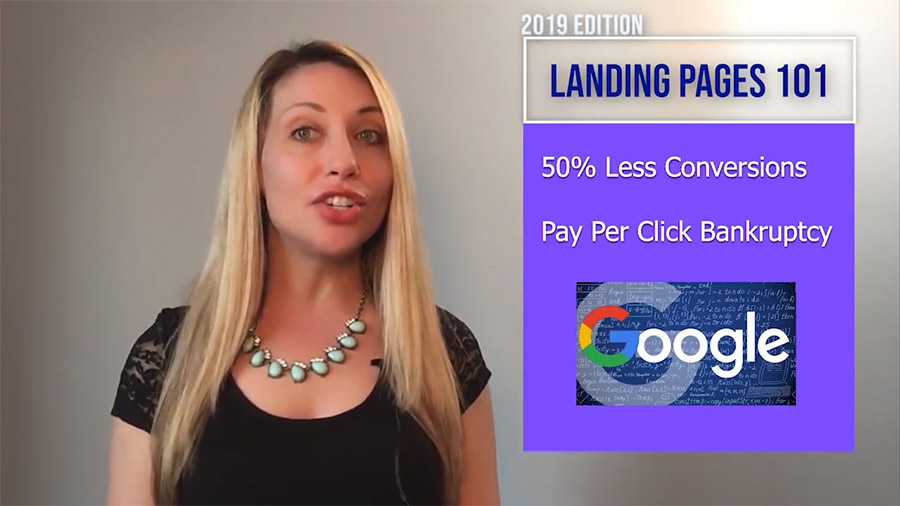BLOG | 091519 | WEBSITE DESIGN
Landing Pages 2.1 2019
In a follow-up to our last website design blog I’ve further condensed this into one “master” video with Olivia.
In this video we cover:
- The call to action (CTA)
- Credibility
- Forms
- The rule of thirds
- Turbulence reduction
- Above The Fold
- Delivering What Visitors Want
FORWARD
It's Your Business - Sink Or Swim With Landing Pages
Landing pages are the core to converting your website visitors into actual prospects. Actual prospects can be converted into actual customers.
Importance
Ok Some Stats
Google Ads
- If your website visitors land on a generic webpage then expect to lose money
- If website visitors land on a landing page optimized to convert them into customers then you have a chance at turning a profit from your Google Ads
Your “conversion rate” is what you want to focus on and what landing pages boost. The % of website visitors who actually convert into a genuine prospect (and later a customer) is your conversion rate. Conversion rates lower than 1% typically occur when you don’t have a good landing page.
What A Landing Page IS
A landing page is the answer to the questions your website visitor is asking. The questions are answered without the visitor having to scroll or click elsewhere:
- What is the website about?
- Who are you?
- What’s in it for me to call or fill out a form?
- Can I trust you?
- Do you have what I want?
The Latest Video With Olivia
In the Combined Video Olivia Covers (In order if you want to skip around):
- Landing Page Statistics
- What is a landing page?
- Turbulence
- The Rule Of Thirds
- Forms
- The Bottom Line
Reference Section
The Rule Of Thirds
The rule of thirds historically has been used in art and photography and is applicable to great landing page design.
The rule of thirds is more of a “tweaking tool” vs an exact rule for website design. Generally typical landing pages are laid out as:
- Upper Left-hand side or Right hand side – key image that represents the message you are trying to get across to your site visitor
- Upper-lower left side or right hand side (usually opposite side of form) – Key message to site visitor like: No Credit Check, Instant Approval..etc
- Middle-lower left-hand side or right hand side – form used to get information and give prospect back value (price quote/etc)

Call To Action
The call to action (CTA) gives incentive for the website visitor to take action:
- Fill out form
- Call
- Buy/Shop
- Register
- Schedule
- Etc …
Filling out a contact us form or some generic name/phone/email “more information” form request. Contact Us is not considered a Call To Action and is a waste of time.
The Form
Most website visitors are not going to call or even chat. They want their information fast and with little to no hassle.
The form must offer value back to them such as:
- Instant estimate
- Scheduling
- Free ebook/etc
- Other value
Above The Fold
Your landing page is always above the fold which is everything the website visitor when they first land on your page. Visitors shouldn’t have to scroll or click for more information that emotionally triggers them to take action such as filling out a form or calling you.
Conclusion
The bottom line is a landing page should give the site visitor what they want and answer the questions they have. The questions are:
- “What is this site about?” They should know instantly it’s the cleaning service they have been looking for…for example…
- “Can I get the information I’m looking for?” Pricing/etc
- “Can I trust you?” If you have credibility proof such as BBB membership, guarantees, etc then make sure they know that.
Landing pages are serious business. No landing page or bad landing page? Fix it. If you plan on cutting corners on this then it’s time to shut your doors because this isn’t a DYI guide – it’s a guide on how to evaluate a pro when finding the right company to help you win online. Good luck and do it right.

